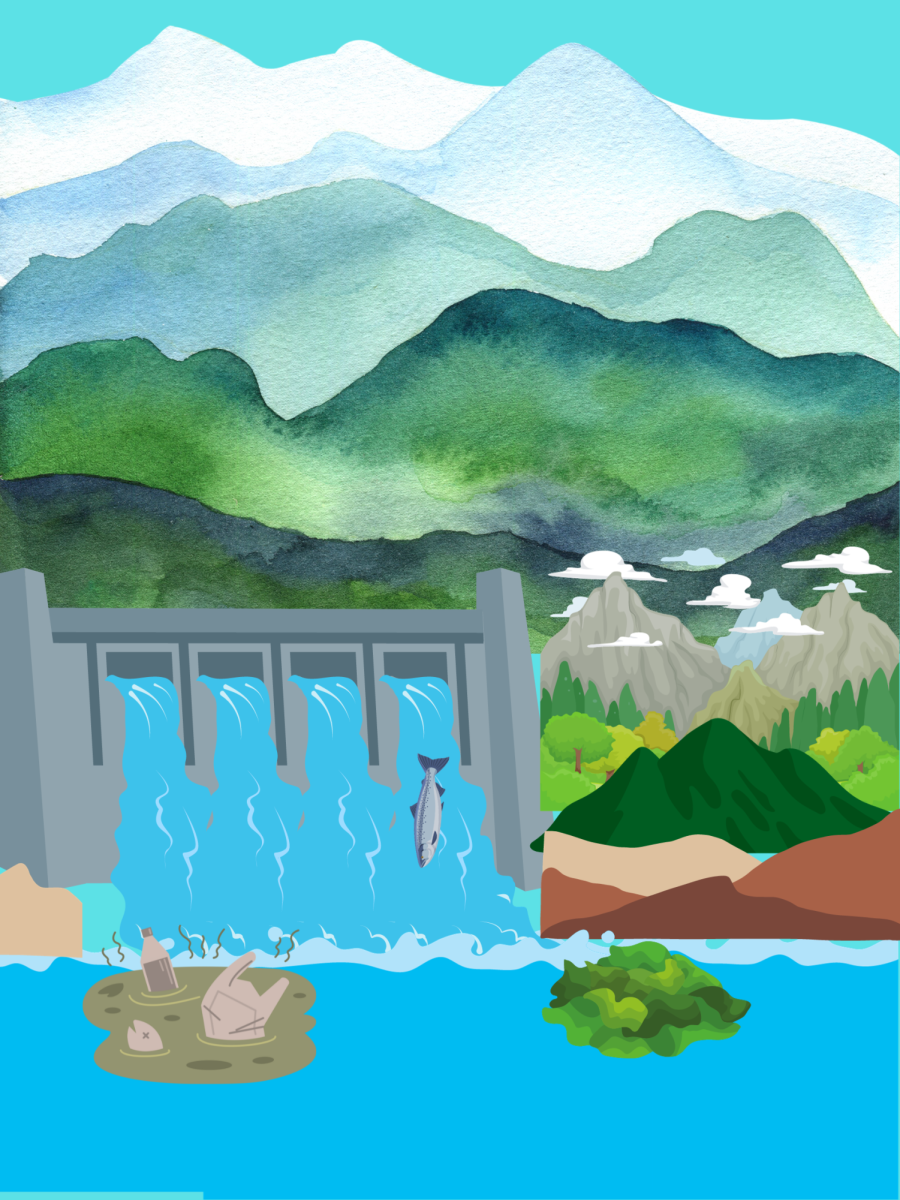In recent years there has been an increase in support for the removal of dams across the nation. Now, these requests are being answered through the removal of the Klamath dams.
The Klamath dams are a series of dams across the Klamath River, located along the border of California and Oregon. The six dams along the Klamath River were originally built as a part of the Klamath Hydroelectric Project in hopes of generating renewable energy.
Four of the six Klamath dams are being destroyed, making this the largest dam removal project in United States history. These four dams are scheduled to be removed by the end of 2024.
The Klamath dams have significantly reduced the water quality of the Klamath river. The dams along the river have created a thick layer of toxic algae and low-oxygen water.
Advocacy for the removal of these dams has been prominent for decades. Activists have been fighting for this removal due to the damage the dams did to the water quality, salmon population and indigenous lifestyles.
Dams in general do cause harm to the biodiversity around them and this is especially seen at the Klamath dams. The low water quality combined with inaccessibility to spawning grounds as a result of the Klamath dams has reduced the salmon population to less than 5% of pre-dam levels.
AP Environmental Science teacher Zachary Marotta noted a similar issue with local bodies of water. “Damming of the Mississippi River poses a threat to wildlife as well. One species in particular is the paddlefish just because the paddlefish, like the salmon, will struggle to return to its spawning grounds,” he stated.
Native tribes have experienced a change to their lifestyles due to the decrease in salmon. Before the dams, many of the indigenous people in the Klamath region thrived off of the salmon population. Now that the salmon population has declined, they have lost a large source of food.
Senior Lucas Olsen was surprised by the harmful effects of the Klamath dams. “I had always had this misconception that dams are 100% good because of the sustainable energy and flood control they provide. Now that I know about their harmful effects, I think they should be removed or renovated so that they do not harm the environment,” Olsen stated.
The dam removal project is a result of pressure from the environmentalists, tribes and fishers. During the early 2000s a lot of the dams’ licenses were approaching expiration, so as a requirement for license renewal, the Federal Energy Regulatory Commission required dams be renovated to allow salmon to swim upstream.
PacifiCorp, the company who owns the Klamath dams, found renovation costs to be too high and instead allowed for the removal of the dams.
This news brought hope to environmentalists and native people by opening up the possibility for the indigenous people to return to their old way of life, using salmon as a source of abundant food.
Marotta justifies this hope through his belief in the effect of dam removals on river ecosystems. “If there are less dams, it is better for the river ecosystem. Whether you are looking at the fish population or the animals that use the surrounding wetlands, those populations would benefit from less dams,” he said.
There is still a lot to accomplish in order to restore the ecosystem previously damaged by the Klamath dams. Once the dams are destroyed, vegetation will need to be added to the areas previously flooded with water. This will prove difficult due to the large amount of sediment at the bottom of the river.
Fortunately, many environmentalists are pairing up with the native tribes to test for which plants will be able to thrive on the ground full of sediments. They have already accomplished a similar project at a previous dam removal, which gives hope that this task will be accomplished.
Regardless of all the unknowns, there are a lot of committed people working to restore the Klamath river ecosystem. With the dedication these people have shown in their fight for the restoration of the Klamath river ecosystem, it seems the project is in good hands.










Ethan Worlton • Nov 5, 2023 at 4:01 pm
I knew that allman-made things generally have a downside, but I couldn’t figure out exactly what damage a dam could do. When placed on a prominent river, it makes sense that it would cause issues to salmon, and therefore to other wildlife (and even people!) who use salmon. I just hope that the destruction of the dams aredone carefully without getting any unwanted materials floating in the river, and that the rest of the area can be fixed and successfully replanted.
Nikhita Nallu • Nov 2, 2023 at 3:35 pm
Great article! I didn’t think about the negative impacts of dams, and I wonder where California and Oregon will gather their renewable energy instead.